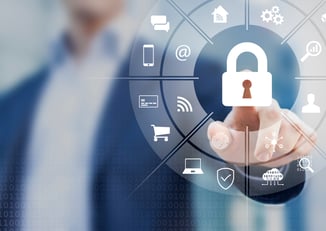 Cybersecurity is a core element in any business that uses the Internet or digital technology in the conduct of its operations.
Cybersecurity is a core element in any business that uses the Internet or digital technology in the conduct of its operations.
As cyber threats become increasingly more sophisticated, disruptive and expensive, cybersecurity has become a fundamental element of digital asset protection and security.
According to a Microsoft report titled “The State of Cybersecurity in 2020: Five Key Trends,” written by Microsoft CTO Diana Kelley, the cost of a data breach to a company averages at around $4 million or nearly £2.9 million.
Aside from the devastating financial consequences of cyberattacks, affected companies also need to deal with the reputational fallout. Companies not only lose money but usually also lose clients in the process. They also need to face lawsuits filed by the affected parties (usually a large number of customers or clients) and a damaged reputation.
But what, exactly, is cybersecurity? Why is it important for all businesses, including the manufacturing industry?
Cybersecurity – the basics
Cybersecurity refers to measures taken by an individual, company or any establishment to protect IT systems, networks, programs and any other digital assets from an internal or external breach or cyberattack.
The management of cybersecurity entails the use of a combination of certain tools, services, technologies, best practices and training. All of these work synergistically and continuously evolve to be able to efficiently counter cyberattack methods that become even more complex with time.
There are three primary components of cybersecurity, namely:
- Tools: These include apps or software designed to make it difficult for hackers and cybercriminals to access your company’s digital assets. Examples of these include firewalls, antivirus programs, encryption software, PKI services, penetration testing and packet sniffers.
- Knowledge: Companies need to have cybersecurity experts who possess in-depth knowledge and understanding of current issues and solutions. These professionals are also the ones who can provide your employees with the training they need to implement cyber hygiene at all levels.
- Planning: Aside from having the tools and expertise you need to protect your digital assets, your company must also have a cybersecurity and disaster recovery plan in place. This will help to ensure business continuity and mitigate the impact of cyberattacks and incidents.
With these core elements in place, you’ll have the confidence of knowing your system is prepared for whatever eventualities that may come.
Why manufacturers can’t ignore cybersecurity risks
 Martin Thomas, European Marketing Manager at Radwell International Ltd explains more. “The manufacturing sector has been the target of costly and damaging cyberattacks through the years. Cyberattacks not only result in the breach of sensitive data but can also lead to a manufacturer’s inability to fulfil customer orders, and the closure of plants and business.
Martin Thomas, European Marketing Manager at Radwell International Ltd explains more. “The manufacturing sector has been the target of costly and damaging cyberattacks through the years. Cyberattacks not only result in the breach of sensitive data but can also lead to a manufacturer’s inability to fulfil customer orders, and the closure of plants and business.
Most cyberattacks that occur in manufacturing involve intellectual property and customer database theft. According to Verizon’s 13th annual Data Breach Investigations Report, 73% of attacks against the manufacturing sector are financially motivated, with a few involving industrial espionage.
Some major manufacturing companies have been the subject of massively damaging cyberattacks. For example, a Japanese automobile manufacturer were the target of a cyberattack using the WannaCry ransomware, a worldwide attack on computers using Microsoft Windows OS. To arrest the spread of infection in their system/network, the company was forced to disconnect five affected plants.
As digitisation (or Industry 4.0) in manufacturing becomes even more widely adopted, cybercriminals will continue to consider the sector a high-value target.”
Tips to ensure business cybersecurity
 Here are some simple tips you and your employees can implement to protect your business from unscrupulous online entities.
Here are some simple tips you and your employees can implement to protect your business from unscrupulous online entities.
1. Implement multi-factor authentication methods
Apart from using passwords to authenticate users who need access to files and systems, multi-factor authentication requires the use of multiple elements in the authentication process. These may include the use of fingerprints and facial recognition.
2. Use only strong passwords
Don’t be lazy and make it a point to make difficult passwords that have no connection to your birthday or any significant other’s birthday, address or phone number. Avoid using the same passwords for different systems or websites, and change corporate passwords regularly.
3. Ensure all software are updated
Whatever OS and apps you are using, consider updates as urgent as these are designed to address or fix vulnerabilities or bugs that cybercriminals can take advantage of to launch attacks.
4. Back up all your data
Use secure cloud storage, and back up your files in external hard drives and your most valuable data assets in storage in an offsite location.
5. Create a culture of cybersecurity in the workplace
Conduct periodic cybersecurity seminars and trainings, as well as drills to train your people at all levels. Be clear about their role in maintaining cybersecurity and the importance of taking ownership of your digital assets.
6. Set a clear BYOD policy
If your company practices Bring Your Own Device (BYOD), ensure you educate employees on the importance of cyber hygiene and what steps they can take to minimise or eliminate the possibility of data breaches occurring through their mobile devices.
7. Conduct phishing simulation tests
An important aspect of cybersecurity drills is the implementation of phishing simulations designed to test employee awareness of email phishing attacks and methods. Be sure to discuss any weaknesses identified and conduct future tests to check for improvement.
8. Carry out inside threat analysis
Have your cybersecurity team conduct an internal threat audit and analysis, including all sources of potential threats. This should cover employees, ex-employees, vendors, contractors, associates and third-party data suppliers.
9. Ensure network segmentation
By keeping your network segmented, you’re keeping your IT network more secure. Network segmentation will ensure that access to one system does not allow access to the rest. Also, make sure you implement the strongest security to your most system-critical networks.
10. Keep abreast with the latest technologies and vendors
Stay updated on current security best practices, technologies and vendors. Keep your system, tools and hardware updated, and be on the lookout for cybersecurity issues and news.
Some of these tips may require substantial investments on your part. However, in protecting your business, it’s a small price to pay for securing valuable digital assets which are the lifeblood of your enterprise.









